Gone is the era when Vietnam evoked only images of rice fields, floating markets, and conical-hat-wearing workers. This Southeast Asian powerhouse has today become a destination known for majestic natural beauty, pristine beaches, unexplored ecological reserves, and delectable cuisines.
The modern Vietnam is vibrant, rapidly developing, yet deeply connected to its ancient history. Sites like Ha Long Bay, Hoi An’s Old Town, and Phong Nha – Ke Bang National Park have joined the UNESCO World Heritage roster, inviting global travelers. Staple Vietnamese foods like bánh mì and phở are common enough to appear in English-language dictionaries. Some of the most discerning travelers in the world are ranking Phu Quoc with the Maldives and Bali on lists of the world’s most beautiful islands.
And that’s only the beginning of what this country has to offer. This comprehensive Vietnam Travel Guide covers everything you need to know for your first unforgettable trip.
1. When Should You Go to Vietnam?
Vietnam is nearly 1,650km (1,025 miles) from north to south—a length that ensures weather patterns vary widely, and that the best time to visit depends very much on your planned destinations and personal preferences. Most visitors will want to avoid the peak stormy season, especially in Northern Vietnam and Central Vietnam, as heavy rainstorms can sometimes lead to flash floods and road closures.
To help you plan your ideal Vietnam travel dates, the country’s climate is separated into three general zones:
| Region | Best Time to Visit | Weather Highlight |
| North Vietnam (Hanoi, Sapa, Ha Giang, Ha Long Bay) | September to November or March to April | Cool and dry, perfect for trekking and sightseeing. |
| Central Vietnam (Hoi An, Nha Trang, Hue, Danang) | April to August | Avoids the worst of the storm season; abundant sunshine for beach activities. |
| South Vietnam (Ho Chi Minh City, Mekong Delta, Phu Quoc) | October to April | Dry season; ideal for exploring the Mekong Delta’s waterways and enjoying island life. |

Ha Giang, Vietnam (now Tuyen Quang Province) in November
2. How Much Time Should You Spend in Vietnam?
To experience the full breadth of experiences here, you would need months. Acknowledging that’s unlikely for most visitors, two weeks is the sweet spot for a comprehensive Vietnam travel experience.
Starting from either Hanoi or Ho Chi Minh City (HCMC), you can travel the length of the country and enjoy a wealth of sights, tastes, and experiences. Must-visit places include iconic favorites like Sapa and Ha Long Bay; cultural and historical hotspots such as Hoi An and Hue; river capitals like Can Tho and the sprawling Mekong Delta that surrounds it; and the tropical island paradise of Phu Quoc.
If you’re short on time or money, quick trips of three to four days focusing on a singular area or city like Hanoi, Ho Chi Minh City, or Phu Quoc are feasible and offer a satisfying taste of Vietnam’s attractions.
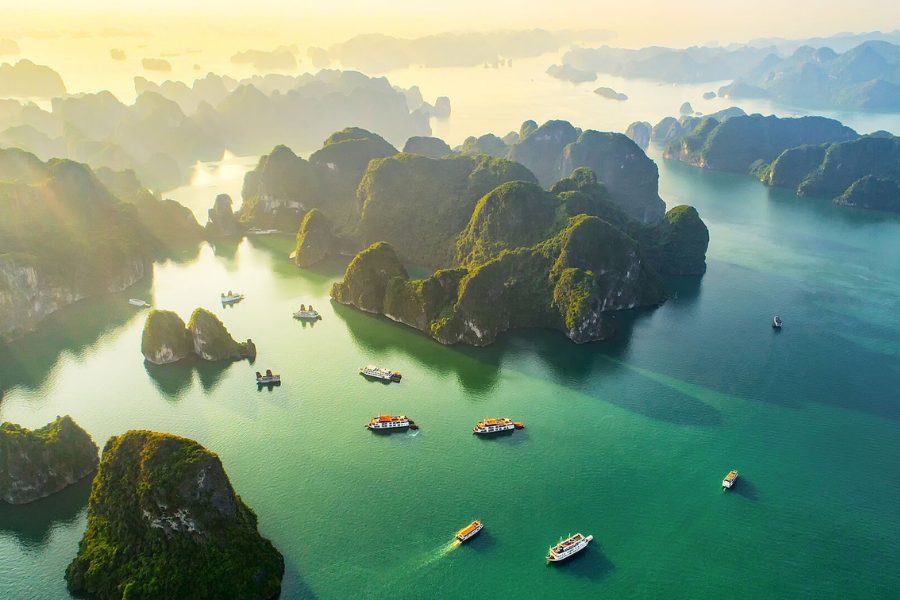
Ha Long Bay in Quang Ninh province was named by UNESCO as a World Heritage Site
3. Is It Easy to Get In and Around Vietnam?
One of the best things about planning your Vietnam travel adventure is the convenience and affordability of transportation.
Getting In
Vietnam has three major international airports:
- Hanoi (HAN): Serving Northern Vietnam.
- Ho Chi Minh City (SGN): Serving Southern Vietnam.
- Danang (DAD): The gateway to Hoi An and Hue in Central Vietnam.
Additionally, Phu Quoc Island has its own international airport (PQH) with direct flights to several regional countries.
Getting Around
Traveling within Vietnam itself is relatively easy and affordable:
- Domestic Flights: These are the most convenient and speedy way to travel the long distance between the North, Center, and South.
- Buses: Highly affordable, buses reach almost everywhere in the country and offer comfortable sleeper options for long overnight hauls.
- Trains (The Reunification Express): Traveling by train is a great option for those who want to take their time enjoying the scenic routes across the country. In recent years, renewed interest has led to the train lines being revitalized and refurbished, offering a nostalgic and beautiful way to travel.
- City Transport: Within cities, cabs, rideshare apps like Grab or Be, and traditional motorbike taxis (xe ôm) are easily accessible. Most Vietnamese city centers are walkable, but be prepared for the tropical heat, humidity, and chaotic traffic.
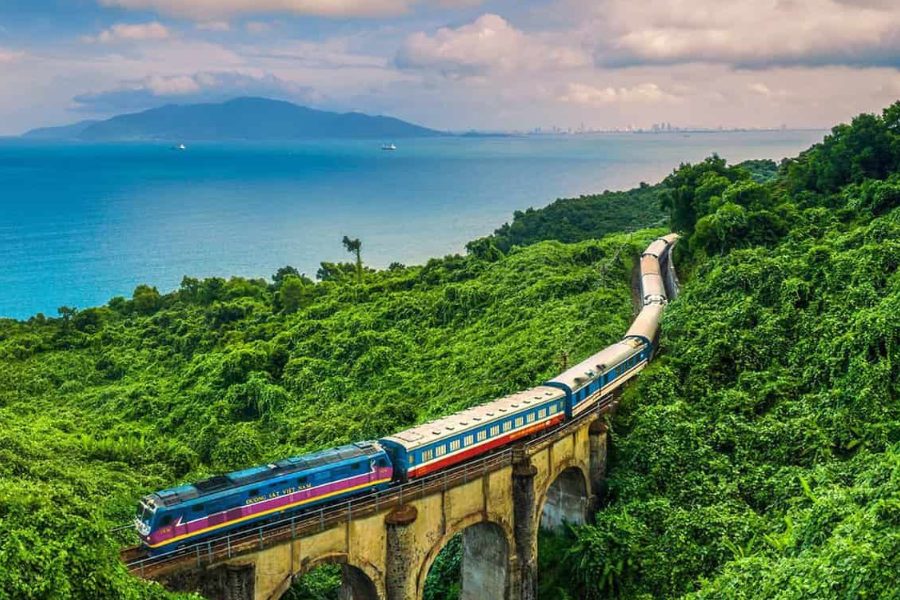
4. Top Things to Do in Vietnam
Your ultimate Vietnam Travel Guide itinerary must include these essential experiences:
See the Islands of Ha Long Bay: This stunning UNESCO World Heritage Site comprises nearly 2,000 towering limestone islands in a massive blue-water bay. An overnight cruise is the best way to take it all in. Traveler’s Tip: If you have extra time, Lan Ha Bay to the south is equally beautiful but much less crowded.
Spend Time in Hoi An: With its lantern-lit streets and quick tailor shops, Hoi An seems frozen in time. Wander the ancient streets, and in the surrounding countryside, a plethora of traditional craft villages await to be explored.
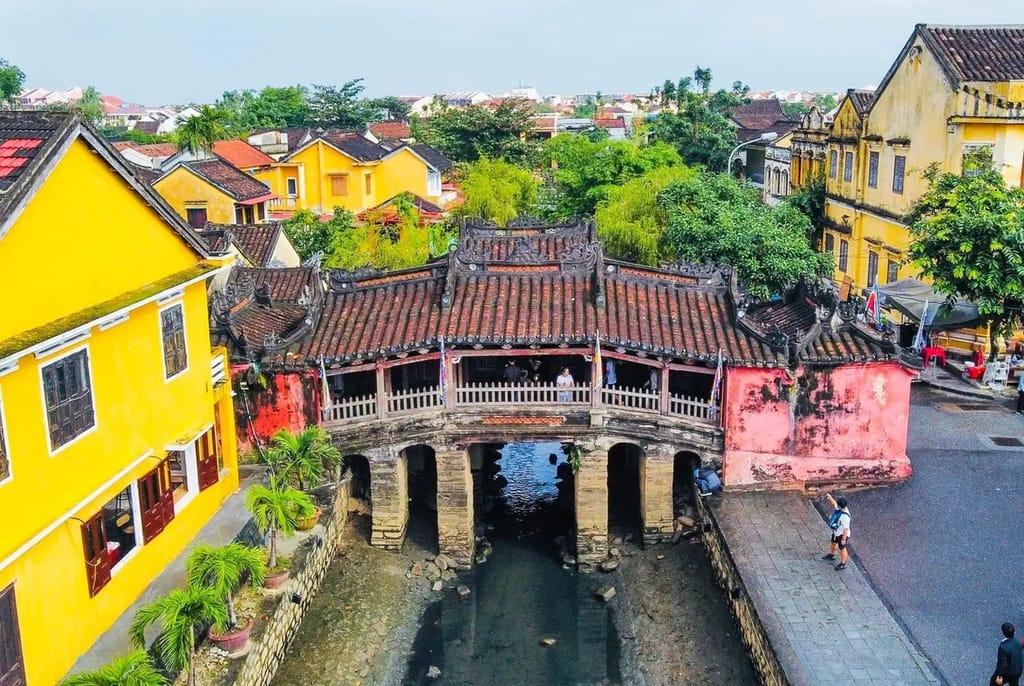
The ancient town of Hoi An has been recognized as a UNESCO World Cultural Heritage Site since 1999
Explore War-Era Tunnels: Climb down the Cu Chi Tunnels near Ho Chi Minh City. This historical warren is an incredibly immersive experience. As of early 2024, night tours have been offered to travelers with nerves of steel!
See the Sites in Sapa: Hike the highland trails of Sapa. The Northwest Highlands are famous for majestic trails and stunning natural beauty, especially the terraced rice fields. Sapa serves as the base camp for adventurous trekkers looking to explore the rugged region on foot.
Wander the Old Quarter of Hanoi: Get lost in this maze of narrow streets, each named after the goods once sold here. It’s the perfect place to experience Vietnamese street culture and, most importantly, the food.
Ride the Ha Giang Loop: Embark on the epic motorbike journey through Hà Giang’s rugged mountains in the far north. The route winds past dramatic limestone karsts, deep valleys, and remote H’mong villages in the Dong Van Karst Plateau Geopark—a UNESCO Global Geopark.

Ha Giang Loop
Float Through the Mekong Delta: Glide along narrow canals in a wooden boat, passing lush orchards and bustling floating markets like Cai Rang or Phong Dien. This fertile river maze south of Ho Chi Minh City is the rice bowl of Vietnam, dotted with stilt houses and family-run orchards.
Wander Imperial Hue: Cross the Perfume River to explore the UNESCO-listed Imperial City, with its moats, palaces, and the haunting Forbidden Purple City. Nearby, cycle to the ornate Khai Dinh Tomb or the serene Thien Mu Pagoda.
Relax in Da Nang: Stroll the Han River promenade at dusk as the Dragon Bridge lights up (and breathes fire on weekends). Hit the powdery sands of My Khe Beach, then ascend Ba Na Hills by cable car for the surreal Golden Bridge cradled by giant stone hands. Traveler’s Tip: Grab fresh seafood at a beachfront stall on Vo Nguyen Giap Street—grilled squid pairs perfectly with cold Larue beer.
Trek the Northwest Rice Terraces: Base yourself in Mù Cang Chải or Hoang Su Phi for guided hikes through cascading emerald paddies carved by H’mong and Dao farmers. The trails link remote villages and offer panoramic views, especially vivid during harvest season. Traveler’s Tip: Time your trek for late September when the terraces turn golden—bring sturdy shoes for slippery paths after rain.
Unwind on Phu Quoc Island: Sink into the powdery white sands of Sao Beach, snorkel vibrant reefs off the An Thoi islands, or wander the night market for pepper-crusted squid. This southern gem blends jungle trails with luxury resorts.
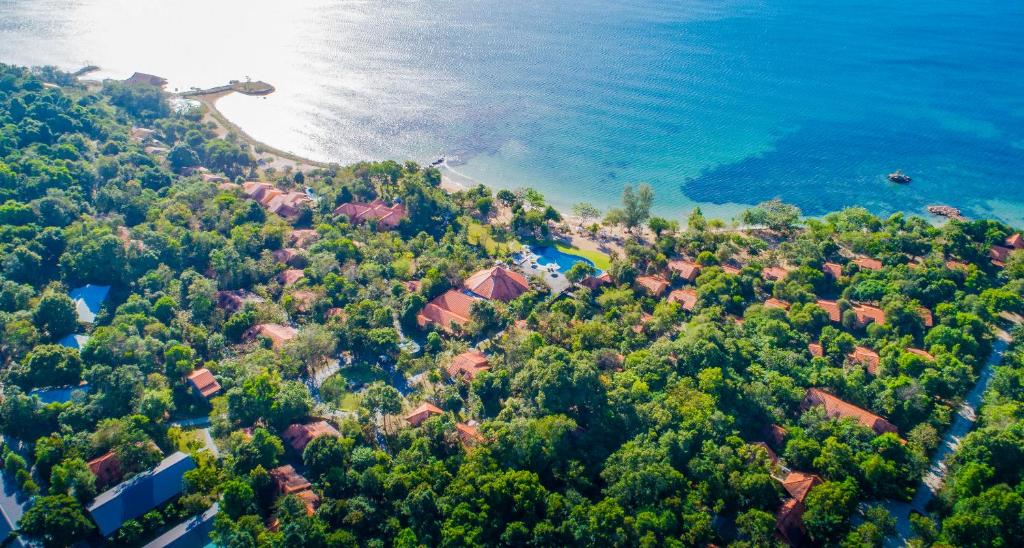
Phu Quoc is famous for its luxurious resorts and stunning beaches
5. Vietnamese Food Adventure
Beyond phở and bánh mì, your Vietnam travel adventure is a culinary journey. You can slurp up more than 200 distinct noodle dishes from every corner of the country. There are foods unique to a single town, herbs unique to a certain patch of a single forest, and cuisines designed to suit the palates of emperors past.
There’s much to learn about the history of Vietnam and its people through the food they cook to nurture each other. The country’s food philosophy emphasizes balance—a perfect harmony of salty, sweet, sour, and spicy.
Must-Try Dishes Beyond the Staples:
- Bún Chả (Hanoi): Grilled pork served over vermicelli noodles and fresh herbs, drenched in a sweet and sour broth.
- Cao Lầu (Hoi An): A chewy noodle dish unique to Hoi An; the water used to make the noodles is said to come from a specific ancient well.
- Bánh Xèo (Savory Pancake): A crispy, turmeric-colored crepe filled with shrimp, pork, and bean sprouts, typically wrapped in lettuce and dipped in a special sauce.
- Cà Phê Trứng (Egg Coffee): A signature Hanoi drink featuring rich Vietnamese coffee topped with a creamy, meringue-like egg foam.
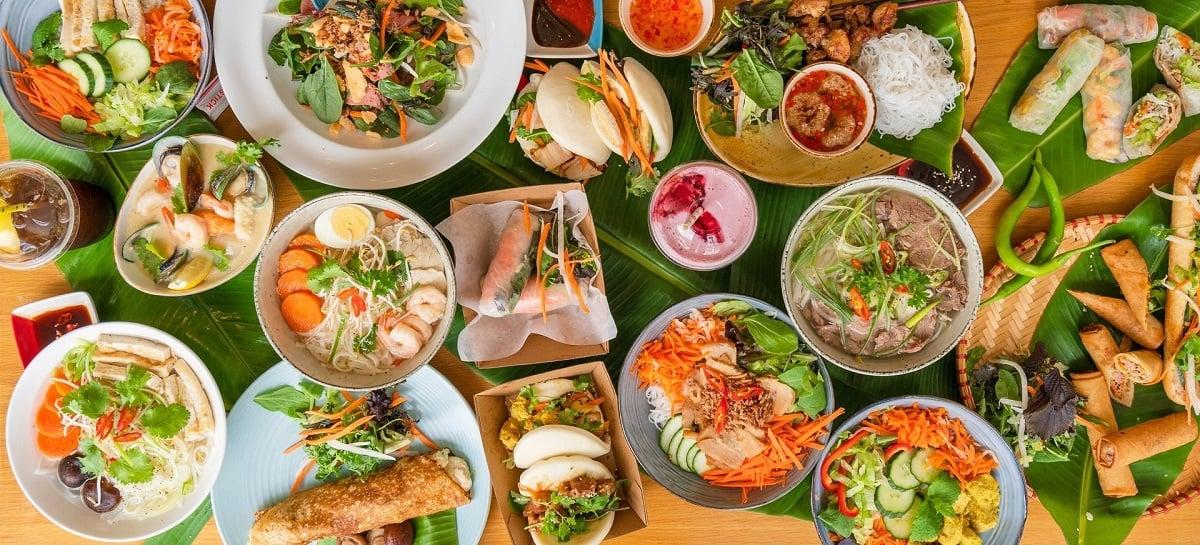
Vietnamese cuisine is one of the things travelers love the most (source: collected)
6. How Much Money Do You Need for Vietnam?
While Vietnam offers luxury resorts, world-class dining, and premium experiences across its regions, it still retains its well-earned reputation as a budget-friendly destination. Prices accommodate all types of travelers, from luxury enthusiasts to shoestring backpackers.
Below are some essential basics for budget travelers. Of course, if you’re looking for a more luxurious and indulgent experience, there are higher-end options available – well worth the extra cost for what you receive.
| Item / Accommodation | Estimated Cost (USD) | Notes |
| Hostel Room (per night) | US$10–15 | Quality dorm bed. |
| Basic Room for Two (per night) | US$10–40 | Clean guesthouses or basic hotels. |
| Local Bus Ticket | US$0.20–1 | Extremely affordable way to get around cities. |
| Coffee (local cafe) | US$1–3 | Includes traditional Cà Phê Sữa Đá. |
| Bánh Mì | US$1–3 | Cheap, hearty, and universally loved street food. |
| Dinner for Two (local restaurant) | US$10–30 | A full meal with drinks at a sit-down local spot. |
| Local Beer (can) | US$1–2 | Draft beer (Bia Hơi) is even cheaper at local beer halls. |
7. Essential Vietnamese Phrases
While English is fairly widely spoken in the big cities, learning a few basic phrases in Vietnamese can only help—and will likely go a long way in demonstrating respect to and forming connections with locals.
| English Phrase | Vietnamese Translation | Pronunciation Tip |
| Hello | Xin chào | Sin Chow |
| Thank You | Cảm ơn | Gahm Urrn |
| Excuse Me / Sorry | Xin lỗi | Sin Loy |
| How much? | Bao nhiêu? | Bow Nyew? |
| Delicious | Ngon quá | Ngon Kwah |
8. Practical Vietnam Travel Tips
To ensure a smooth trip, keep these quick tips in mind:
- Bring Lots of Layers: The country’s climate varies greatly within short distances, so packing for different temperatures (from the cold North mountains to the hot South beaches) is essential.
- Respect Local Customs and Etiquette: As in other Asian nations, the Vietnamese value politeness and respect. When visiting temples, remember to dress modestly (covering shoulders and knees), and always remove shoes when entering someone’s home.
- Stay Away from Tap Water: Tap water in Vietnam is generally not safe to drink, so stick to bottled water everywhere. Bring a personal water bottle to refill and help reduce plastic waste in the environment.
- Choose Street Foods Carefully: Enjoying street food is an essential Vietnamese experience, but because food hygiene can sometimes be an issue, observe the locals and choose the street vendors they favor—usually the busiest ones!
- Prepare for Chaotic Traffic: Traffic laws can sometimes feel more like suggestions in HCMC and Hanoi. Be extremely cautious when crossing streets. Only consider renting motorbikes if you are a highly experienced and licensed driver.
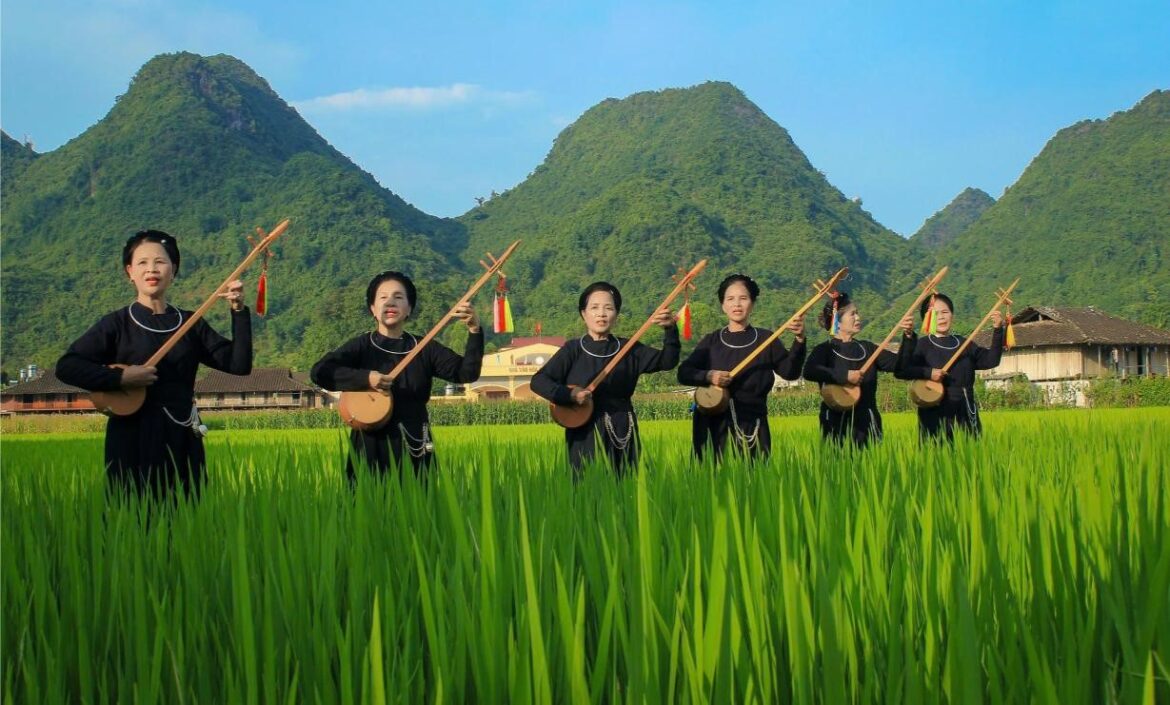
Respecting local culture is an important note when traveling in Vietnam (source: Heritage)
9. Vietnam Travel Guide: Itinerary Suggestions for Your Vietnam Travel
Here are some popular itinerary ideas for first-time visitors to Vietnam:
Encounter Vietnam Culture, Nature, Food and Local Lifestyle in 13 Days
Explore Vietnam from South to the North, getting a taste of the country’s diverse landscapes, intriguing history and rich culture.
Day 1: Welcome to Ho Chi Minh City
Day 2: Cu Chi Tunnel & Saigon Half Day City
Day 3: Saigon – Mekong Delta – Vinh Long
Day 4: Mekong Delta – Saigon
Day 5: Saigon – Danang – Hoi An Ancient City
Day 6: FARMING LIFE ON HERB GARDEN TOUR
Day 7: HOI AN & HANOI CULTURE ADVENTURE BY VINTAGE MINSK
Day 8: Hanoi – Tho Ha Village – Galaxy Grotto
Day 9: Hanoi – Sapa – Half Day Sau Chua – Sa Seng
Day 10: Lao Chai & Ta Van Village
Day 11: SAPA – HANOI
Day 12: HANOI – Lan Ha Bay in Cat Ba Archipelago
Day 13: Lan Ha Bay – Hanoi & Departure
View tour details at: Encounter Vietnam Culture, Nature, Food and Local Lifestyle in 13 Days
Solux Vietnam in Style 14 Days
Travel to Vietnam and discover the rich history of its ancient empires. Get a taste of the country’s diverse landscapes, intriguing history and rich culture. From the natural beauty of Halong Bay to the buzzing streets of Ho Chi Minh City, enjoy immersive tours to truly connect with the remarkable wonders of Vietnam.
DAY 1: HANOI ARRIVAL
DAY 2: HANOI OLD AND NEW
DAY 3: CULINARY EXPERIENCE WITH CHEF & A STEP BACK IN TIME TO “NOM” VILLAGE
DAY 4: HALONG BAY WITH BIRD EYE’S VIEW AND LEISURELY CRUISING
DAY 5: HALONG BAY – HANOI – HUE
DAY 6: HUE ANCIENT CITY & HOME HOSTED LUNCH
DAY 7: EXPLORING WET RICE CULTURE
DAY 8: HUE – HOI AN & ROMANTIC DINING ON PADDY FIELD
DAY 9: HOI AN COUNTRYSIDE BY VESPA – HOI AN WALKING TOUR
DAY 10: HOI AN – DANANG – HCMC – CITY HIGHLIGHTS
DAY 11: CU CHI TUNNELS TOUR LED BY A VC VETERAN – ULTIMATE DINNING EXPERIENCE & ROOFTOP BAR UNWIND
DAY 12: SAIGON – BEN TRE – CAN THO
DAY 13: CAN THO – A WELLNESS DAY FOR YOUR WHOLE BEING
DAY 14: CAN THO – SAIGON – DEAPRTURE
View tour details at: Solux Vietnam in Style 14 Days
Hope this Vietnam travel guide will be helpful to you. Vietnam is a country of breathtaking landscapes, historical depth, and legendary hospitality. It’s an easy and rewarding country to explore, offering luxury, authenticity, and incredible value.
Ready to plan your escape? Contact Lux Travel DMC to co-create inspiring, bespoke journeys rich in local culture, authenticity, luxury, and sustainability across Vietnam, Thailand, Laos, Cambodia, Indonesia, and beyond.
